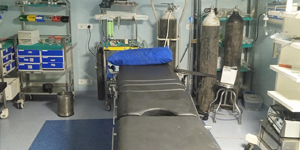Home / ICU Facilities

Sexual Health Infertility
In a hospital setting, ICU facilities are specifically designed to cater to the needs of critically ill patients who require constant monitoring and advanced medical care. Here are some common facilities and features you might find in an ICU within a hospital:
1. Monitoring and Diagnostic Equipment
- Continuous Vital Sign Monitoring: Equipment to continuously track heart rate, blood pressure, oxygen saturation, and respiratory rate.
- ECG Monitors: To monitor heart rhythms and detect arrhythmias.
- Pulse Oximeters: To measure blood oxygen levels.
- Portable Imaging: Equipment like portable X-rays or ultrasound machines for on-the-spot diagnostics.
2. Life Support Systems
- Ventilators: For patients who need assistance with breathing or are unable to breathe independently.
- Infusion Pumps: To deliver medications, fluids, and nutrients at precise rates.
- Dialysis Machines: For patients with kidney failure, providing renal replacement therapy.
3. Specialized ICU Beds
- Adjustable Beds: To facilitate various patient positions and procedures.
- Pressure Relief Mattresses: To prevent pressure ulcers in immobile patients.
4. Emergency and Resuscitation Equipment
- Crash Carts: Equipped with medications, defibrillators, and other emergency supplies for cardiac arrest or other crises.
- Defibrillators: To provide electrical shocks to the heart in case of arrhythmias.
5. Infection Control Facilities
- Isolation Rooms: To manage patients with contagious diseases, with enhanced air filtration and isolation protocols.
- Hand Hygiene Stations: Access to hand sanitizers and sinks to maintain cleanliness.
6. Medication and Drug Administration Systems
- Automated Medication Dispensing: Systems to ensure accurate medication administration.
- Centralized Medication Stations: For safe storage and handling of drugs.
7. Communication Systems
- Intercoms and Nurse Call Systems: For immediate communication between patients and staff.
- Telemedicine Facilities: For remote consultations with specialists.
8. Family and Support Areas
- Family Waiting Rooms: Comfortable spaces for family members to wait and receive updates.
- Counseling Services: Available for emotional support and information.
9. Nutritional Support
- Enteral Feeding Equipment: For patients who cannot eat by mouth.
- Parenteral Nutrition Services: Intravenous nutrition for patients with severe digestive issues.
10. Staff Facilities
- Workstations: For healthcare providers to access patient records, communicate, and coordinate care.
- Break Rooms: For staff to rest and take breaks, ensuring they are well-rested and alert.
11. Safety and Security Measures
- Controlled Access: Restricted entry points to prevent unauthorized access and protect patient confidentiality.
- Surveillance Cameras: To monitor the ICU environment and ensure safety.
These facilities are integral to providing high-quality, intensive care and ensuring the best possible outcomes for critically ill patients.
Sexual problems commonly associated with infertility
Male problems
- Loss of desire, with a consequent decrease in sexual activity
- Erectile problems
- Premature ejaculation—little or no control over ejaculatory response, and ejaculation may occur before vaginal entry achieved
- Retarded ejaculation—difficulty ejaculating intravaginally, or at all
Female problems
- Loss of desire
- Vaginismus
- Dyspareunia
- Anorgasmia
